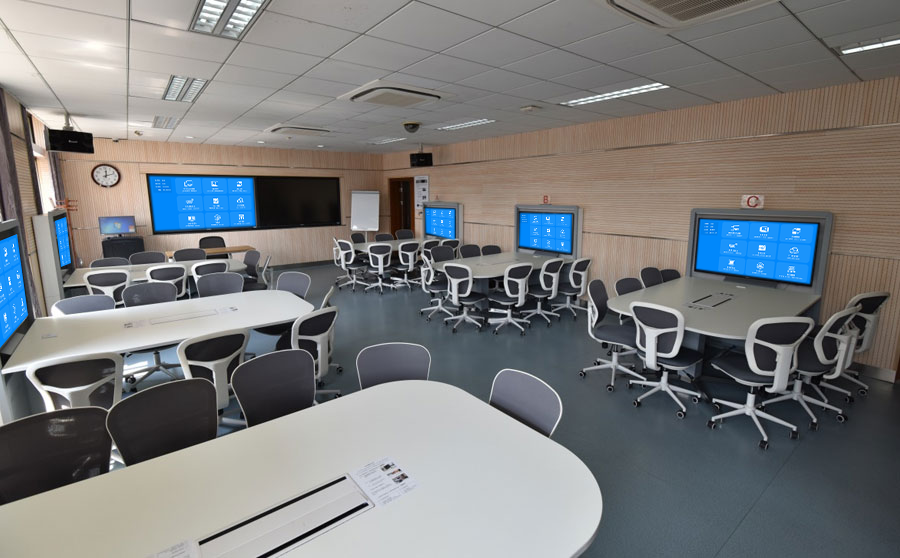Smart Classrooms: An Interactive Teaching Solution
A smart classroom uses device collaboration as its foundation, enabling a shift from one-way lectures to two-way interaction through convenient content flow and interactive functions. This covers the entire process, both in and out of the classroom.
1. Seamless Device Linkage
The classroom’s main screen, the teacher’s terminal, and student devices can automatically form a network. It’s fully compatible with Android, iOS, and Windows systems. New and old devices can connect by scanning a QR code in 3 seconds, with a compatibility rate of 99%. When a teacher’s tablet is near the main screen, it automatically mirrors the content. When the teacher walks to a student, they can “pull back” the content to their tablet for a close-up explanation without any lag in operation.
2. Innovative In-Class Interaction
Flexible Courseware Display
A teacher can use their device to control courseware, highlighting key points with a finger that appear on the large screen in real time. They can also instantly mirror supplementary videos found on their phone and project lab details when paired with a visualizer, so students in the back can see clearly.
Deeper Teacher-Student Interaction
Students can scan a QR code to mirror their homework or lab notes to their group’s screen or the main screen. The teacher can then enlarge the content to annotate it, and the marks are synchronized back to the student’s device. During group discussions, multiple devices can mirror content in a split-screen view, allowing the entire class to compare ideas. The teacher can circle highlights to guide the summary.
3. Continuous Post-Class Extension
Classroom courseware, homework, and annotations are automatically saved to the class resource library. Students can scan a QR code to review the complete content and can also watch a playback of the mirrored video from the class to catch up on any missed knowledge points. Teachers can use a backend to view class data, such as how many times a courseware segment was mirrored and common mistakes in homework, to help them optimize key teaching points.
This solution turns devices into teaching assistants, lowering the operational barrier and integrating interaction into the classroom to make smart teaching a part of everyday life.